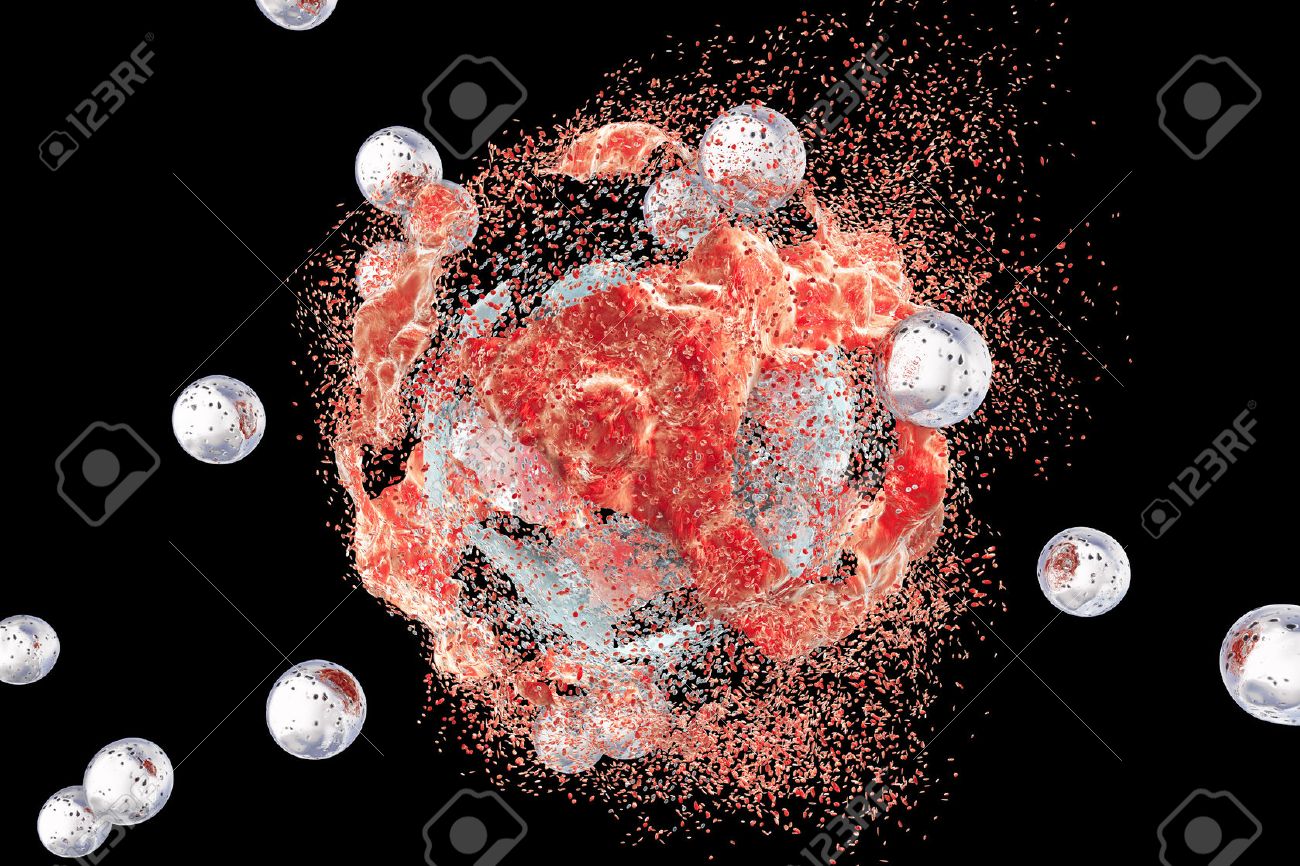I am very excited to continue to talk about one of the fucoidan’s health benefits. This topic of fucoidan inducing apoptosis is unique, as we are going to discover the more powerful effect of fucoidan that can initiate cancer self-destruction. If cancer cells disappeared by themselves, it is just not great but also a medical miracle. This miracle agent is Fucoidan, which has the capacity to help to induce the self-destruction of cancer cells.
Apoptotic events: Examples 1)
Perforin is a protein. It is released by killer cells, that can help to cause severe destruction of the cancer cell membrane. Perforin is released from Natural Killer cells and T cells, and it with the combination of granzyme, it could induce apoptosis. Upon recognition of anti-tumor associated antigen (TAA)-expressing malignant cells and T-cells, and promote T cell perforin and granzyme B release. Perforin pores will allow granzyme B to enter the malignant cancer cells and activate caspases to trigger cell death (apoptosis)

2) Intrinsic pathway apoptosis
Proapoptotic BCL2 family members BAX and BAK translocate to the mitochondria. Protein BID activates BAX and BAK to mediate the release of cytochrome C in the cytosol. This triggers the assembly of the apoptosome (APAF1 and Caspase-9) and subsequent activation of Caspase-3 and cell death.

3) Extrinsic pathway apoptosis
The extrinsic cell death pathway is mediated by a subgroup of the TNF receptor superfamily called the death receptors (TNFR1, FAS, and TRAIL). Receptor-mediated cell death is initiated by the recruitment of adaptor proteins, like FADD, which then bind to DED-containing procaspases to generate a death-inducing signaling complex (DISC) that leads to the activation of Caspase-8. Caspase-8 directly cleaves and activates Caspase-3, the executioner enzyme of apoptosis(See the link for detail).
https://science.sciencemag.org/content/305/5689/1411/F1
4) The p53 pathway apoptosis
The p53 gene is a tumor suppressor gene. P53 can enhance the expression of Bcl-2 family members, including Bax, BID, PUMA, and Noxa. It is also known to regulate APAF-1, a co-activator of the apoptosis initiator Caspase-9. Additionally, p53 has induced apoptosis in response to abnormal proliferative signals and stress, including DNA.

Apoptosis Induction of Fucoidan
Finally, I would like to share with you how fucoidan induces apoptosis; in other words, self-destruction of cancer cells. Here is an example, take by the research of Eun Ji Kim et al., “Fucoidan present in brown algae induce s apoptosis if human colon cancer cell”, HT-29 and HCT116 cells which are colon cancer cells were cultured with various concentration of fucoidan (0-20µg/mL), and after flow cytometric analysis, fucoidan-induced apoptosis in HT-29 and HCT116 human colon cancer cells. You can find the following graphs, and this study shows fucoidan initiate two pathways:
1) Fucoidan has induced the extrinsic apoptosis through the pathway of death receptors on the cell surface.
2) Fucoidan has induced the intrinsic apoptosis pathway through mitochondria in the cells.

